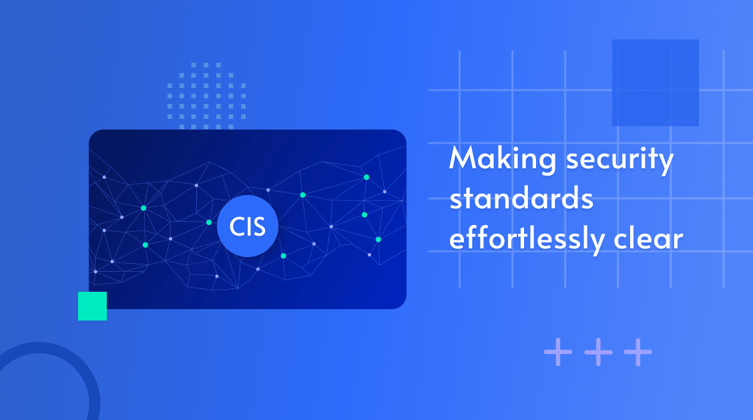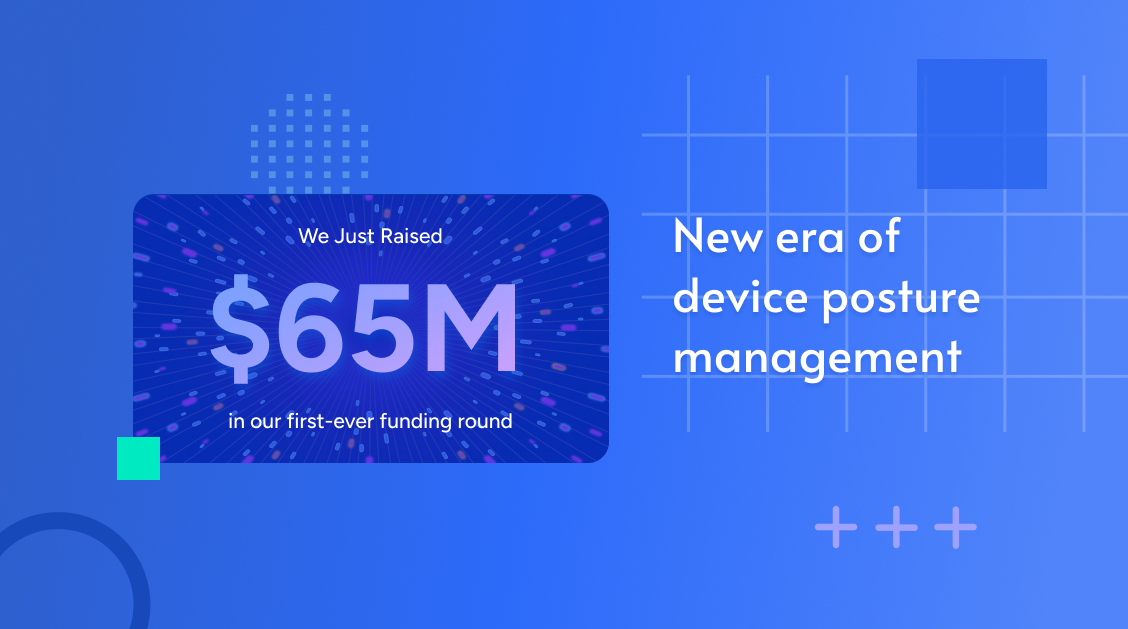We may have known it for a while, but now we are officially cool! Remedio was ju...
Using CIS As A Rosetta Stone for Configuration Compliance

Maintaining secure and compliant device configurations is a top priority for enterprise businesses. With increasing cloud adoption however, it's something that is increasingly complicated and increasingly overlooked.
Would that it were so, but operating in the cloud does not allow you to wash your hands of device level responsibilities; not in general and certainly not with respect to configurations. It would be great if cloud solution providers took care of this out-of-the-box, but that's just not how it works.
Maintaining smart, secure, best practice adherent configurations is no small task in on-prem environments. In cloud environments, it can be just as tricky and much less familiar. Managing virtual machines and cloud instances adds a layer of complexity, making compliance more challenging due to the constantly changing nature of OS configurations and cloud workloads. And hybrid environments — the dominant model for large sophisticated organizations — represent additional layers of complexity.
Regardless of the environment, industry standards like the Center for Internet Security (CIS) make it a lot easier to benchmark best practices and a lot easier to action in areas that fall short.
Here, we'll look at what sets CIS apart and how Remedio uses their benchmarks and controls as a Rosetta Stone to unlock any number of compliance frameworks.
What Are CIS Benchmarks?
The CIS framework is made up of controls and benchmarks. Controls outline the best practice conditions to help strengthen your cybersecurity posture. These are somewhat generic guidelines for securing entire systems and networks. As of CIS Controls v8, there are 18 top-level controls, each broken down into safeguards (sub-controls).
Benchmarks, on the other hand, are very specific and prescriptive configuration recommendations. Recommendation that when applied can be expected to secure your environment across all devices, operating systems, software, and workloads.
Put simply, controls tell you what to secure, and benchmarks tell you how to do it.
CIS Benchmarks® are divided into three primary levels:
- Level 1: These benchmarks provide general security guidelines that can be applied to physical or virtual devices connected to the network without impeding their functionality. The focus here is largely on the device.
- Level 2: These benchmarks detail security measures and management practices suitable for sensitive data environments. The focus here is largely on applications and services, with the goal of preventing unapproved or outdated software from being installed and used.
- Security Technical Implementation Guide (STIG): Unlike CIS 1 and CIS 2, which are broader best practices for general cybersecurity, STIG benchmarks were Developed by the U.S. Department of Defense to provide stricter, more technical, and specific standards for deeper levels of system hardening.
- While STIG compliance is mandatory for U.S. government and DoD systems, commercial enterprises can also adopt them for higher security assurance.
While CIS 2 but does not represent a higher level of security than CIS 1, it can sometimes be more difficult to achieve due to shadow IT (unauthorized apps) and constant software updates. STIG however does represent a higher level of security, providing a framework for the highest standard of system hardening.
Developed by a global community of cybersecurity experts, IT professionals, and vendors, CIS provides detailed, platform-specific guidelines (e.g. for specific operating systems, cloud services, and network devices) to help operators securely configure their systems — reducing vulnerabilities, improving consistency, and establishing a defensible security posture.
CIS Benchmarks® help organizations eliminate unnecessary services, close open ports, disable insecure protocols, and enforce least privilege — all of which dramatically reduce the potential paths an attacker can exploit. They also define secure baseline configurations for systems like Windows, Linux, macOS, network devices, and cloud platforms.
This gives IT and security teams a clear, measurable standard to build, audit, and maintain systems against — minimizing configuration drift and shadow IT. By enforcing CIS Benchmarks®, operators gain better visibility into endpoint configurations and systemic weaknesses. It brings structure and consistency to areas that are often fragmented — especially in large or hybrid environments.
CIS Benchmarks® provide common ground for security and operations teams to collaborate. Rather than debating over what’s "secure enough," teams can reference agreed-upon standards and use automation tools (like Remedio) to enforce and monitor compliance with minimal disruption.
Common Purpose In Compliance & Posture
CIS compliance isn’t just a checkbox — it’s a foundational strategy for building secure, resilient, and well-governed IT systems. It ensures that you're not only reacting to threats, but proactively hardening your environment against them.
If you regularly follow our content, this might seem quite familiar. This is because the driving forces and approaches behind CIS are very similar to those behind Remedio And it'll probably come as little surprise then to learn that we at Remedio are especially found of CIS. In fact, it's kind of our not so secret secret weapon.
Other compliance frameworks are all about the controls. Which is to say they tell you what you must achieve — i.e. secure device configurations — but provide scarce if any direction on how to achieve it. CIS is different. For every control, there's a prescriptive benchmark.
For us at Remedio that's gold. Not only because it gives us a clean and clear path to CIS compliance, but because the relationship between controls and benchmarks allows us to do the same for virtually any other framework. By mapping the controls of other frameworks — say HIPAA, MITRE, PCI, or NIST — to CIS controls, we know which benchmarks to apply.
Critically, this translates general, non-prescriptive requirements into specific, actionable measures.
Progress Unlocked
The traditional approach to CIS compliance relies on tedious audits and manual management. Reviewing and remediating configurations in this manner across a complex and diverse digital ecosystem is both labor-intensive and error-prone. And this is what Remedio is changing
Of course, maintaining CIS compliance is not a one-time effort, which is why Remedio provides continuous monitoring and compliance enablement — identifying deviations from established security baselines across all devices, operating systems, and cloud instances; whether driven by software update, patches, group changes, additions, or user modifications.
Comparing current states against the framework of your choice, Remedio pinpoints deviant devices and settings for push-button remediation. Through a centralized view of non-compliance device settings and instances, operators can better see where best to focus their efforts and move forward with click-to-comply remediation.
And to help get the ball rolling quickly and with with force, Remedio helps operators focus first on quick wins: the changes they can make right away to harden security and improve compliance without any risk of downstream disruption.
For example, older applications may rely on protocols or ports that are no longer considered secure. With Remedio, operators could ensure that disabling the protocol or closing the port would not impair critical functionality before they push any changes.
Remedio also offers instant revert capabilities to ensure that operational integrity is never compromised. This not only provides a vital lifeline when critical mistakes are made, but also gives the organization the confidence needed to assume a much more aggressive approach to device hardening. The ability to rollback changes in this manner ensures that security efforts never come into conflict with the stability of critical systems.
These are just some of the ways that Remedio makes it easy to maintain, enforce, and monitor compliance benchmarks for industry-standard frameworks based on the technical requirements of CIS 1, CIS 2 and STIG. And that's not a trivial accomplishment. It's a very very big deal.
In fact, it was enough to make industry behemoths like AWS sit up and take notice. The cloud giant recently published an article highlighting Remedio and its value in streamlining CIS compliance for EC2 instances.
But the cloud is just one piece of the equation and we're intent on solving the whole thing — physical devices, virtual machines, and every combination of the two. We want to make it possible to security every device everywhere with the push of a button.
About Author

Ilan Mintz
Subscribe to
our Newsletter
We are ready to help you until and unless you find the right ladder to success.
Related Posts
Join over 25,000 in beating the failure of strategies by following our blog.
Six years ago, we set out with a simple but ambitious mission: to make enterpris...
3 minute read
If a threat falls in the SOC and no one ties it to revenue, does it really make ...
7 minute read
Active Directory (AD) is the powerhouse of the enterprise — the central hub wher...










Comments